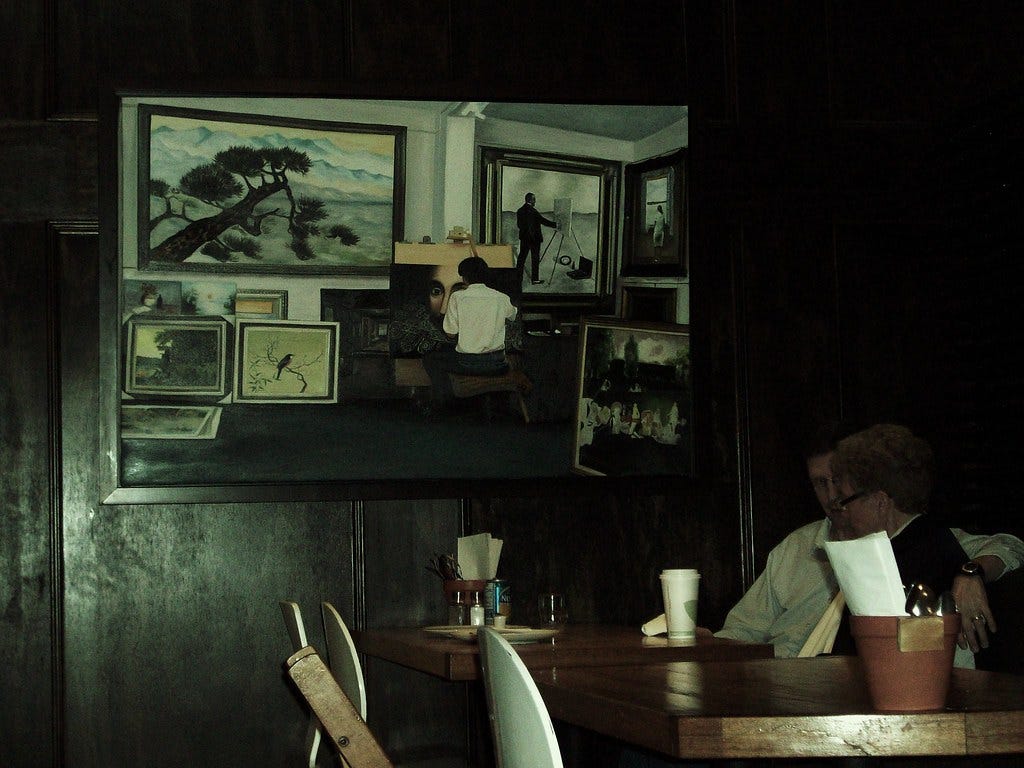On Exemplarity
A commentary on "(Bella) Freud's Self-Analysis"

This is just a short text, as a means of adding in the marginalia from another piece of writing - (Bella) Freud’s Self-Analysis. In that piece, I nested two differing definitions of the ‘example’ - one psychoanalytic (enunciation), and another pedagogical, used in the teaching of psychoanalysis (the clinical vignette).
The namesake of the piece (the British designer, Bella Freud), has in a sense very little to do with what I was actually trying to gain access to, which was the perceived difficulty in demonstrating psychoanalysis. Nevertheless, Bella’s podcast, Fashion Neurosis, provides examples that are both instructive (as a ‘clinical vignette’), and psychoanalytic. This is not to say that we should go looking for psychoanalysis everywhere, nor does it mean we should locate it only in examples that, squinting our eyes, resemble clinical psychoanalysis in form (is someone laying down?).
The clinical vignette, long established as the default means of providing an indication of proof for what has occurred between two people in a given room is an imperfect teaching aid, insofar as its narrator - the analyst, the therapist, whatever - provides a secondary elaboration, a metabolisation, of that encounter. The text is never neutral; it is already didactic, purposive, shaped by its Zielvorstellung (its intended aim). The text, then, is never just a text.
But the vignette is also initial in the training of the analyst; it is a mode of expression through which candidates learn to communicate (and thus demonstrate) their capability as analysts. The knowledge of the analyst - or supposed knowledge1 - is also here, inescapably, self-knowledge, insofar as the personal analysis proceeds and underscores the training of the candidate.
When we teach psychoanalysis, we lean into the elasticity of this question - which can both demonstrate the unbearable tension of psychoanalytic thought, or else slacken the question to the extent that different forms of tension emerge. For students of psychoanalysis, studying at the university (myself included here), the great revelation is that psychoanalysis can, even in this limited, non-clinical context, constitute both an auto-didactic and self-analytic experience.2
Jean Laplanche, throughout his seminar, establishes these two ‘auto’ moments as the principal motor of all psychoanalytic pedagogy. Notably, Laplanche’s theory of seduction3 extends the logic of the ‘auto-’ moment - first developed in the teaching relationship - into a fully-developed conceptual framework (I’ll return to this elsewhere).
In any case, I wanted to find a place for the following bit of text in the Freud piece, which comes from another analyst of the French tradition, François Gantheret. Like many of his peers, Gantheret was concerned with the expansion of the category of the example, and, as co-editor of Jean-Bertrand Pontalis’ journal, Nouvelle Revue de psychanalyse, worked within a more ‘literary’ tradition of psychoanalytic writing. Problematising the limit of the clinical vignette, Gantheret held the position that, "...the only way to transmit the experience of analysis could be through fiction,"4 and so began fabricating case histories for the purposes of exposition.
Here is the quote - referring back to Freud’s phrase, Das Beispiel ist die Sache selbst [“the example is the thing itself”], which I referenced in (Bella) Freud’s Self-Analysis:
The word is even stronger in German, where Beispiel is not just something extracted - ex-emptus - but Bei-Spiel, "by-play." This is how analysis proceeds, in the play of pathways, the trails of thought; granting equal interest, equal weight of truth, to the minuscule and the grandiose, to the faint trace of a forest path and the signs of the highway, to that barely noticed shred of an idea passing at the edge of the mind and the heavy problems occupying its center. To be, in oneself, sufficiently free and assured to leave room for everything that passes - "significant" or insignificant, and especially insignificant - for everything is there, present, waiting to be thought.5
The extract comes from Gantheret’s short text, The lady was a tramp (1996), which was written as a eulogy to Juliette Favez-Boutonnier - psychoanalyst, and close friend of Gantheret’s, as well as the founder of the UER des Sciences Humaines Cliniques at Université Paris VII.6
The association to ‘by-play’ is a beautiful one - and in fact I would encourage you to read the full text (it’s in French) - though unfortunately Beispiel has no relation to the German word for ‘play’ (spiel), despite it providing such an apt metaphor. The root is bīspel, literally, bī- (“by-”) + spel (“talk”). And so here, for lack of a better ending, I want to loop back on myself, returning to those two definitions of the ‘example’ that I spoke about above - one psychoanalytic (what is spoken, enunciation), and another used in the teaching of psychoanalysis (the clinical vignette). Collapsing the distinction between the two gives us access to the prime vector of psychoanalytic thought.
Lacan’s ‘sujet-supposé-savoir’ [or ‘subject-supposed-to-know’].
I was further reminded of this point in a recent post by Katherine Tallent
The théorie de la séduction généralisée, arguably his most significant theoretical contribution to psychoanalytic thought. Notably formulated in Nouveaux fondements pour la psychanalyse (1987), translated into English as New Foundations for Psychoanalysis (2016).
François Gantheret (2010) La nostalgie du présent, psychanalyse et écriture, p. 18.
François Gantheret (1996) The lady was a tramp (ou : comment Juliette Favez-Boutonier était psychanalyste), in Bulletin de psychologie, p. 156.
The Unité d'enseignement et de recherche (UER) des Sciences Humaines Cliniques - or, ‘Teaching and Research Unit of Clinical Human Sciences’ - the department established at Paris 7 University following the educational reforms post-Mai ‘68. The Faure Law, as it was known, also helped to establish the more well-known experimental centre at Vincennes. Both Gantheret and Laplanche joined the faculty of the UER, with Laplanche founding, in 1969, the first so-called ‘laboratory’ of psychoanalysis, solely dedicated to psychoanalytic research.


